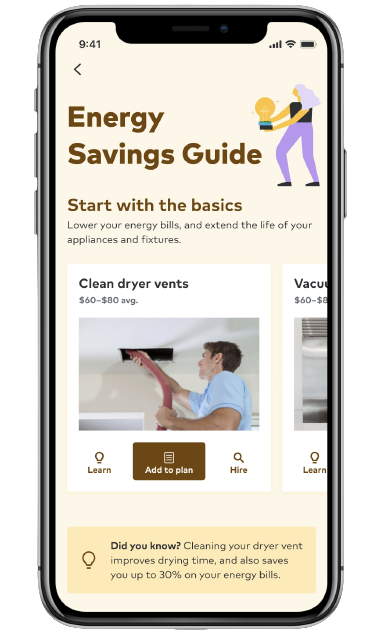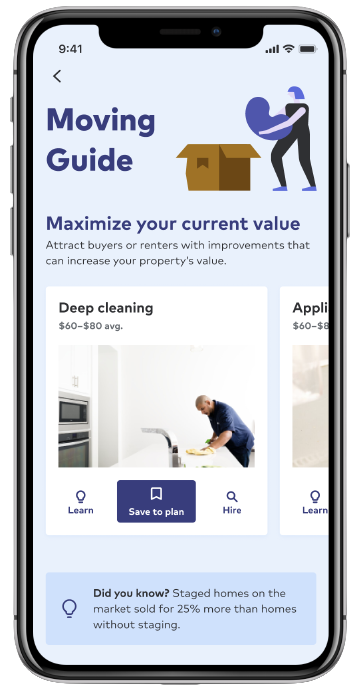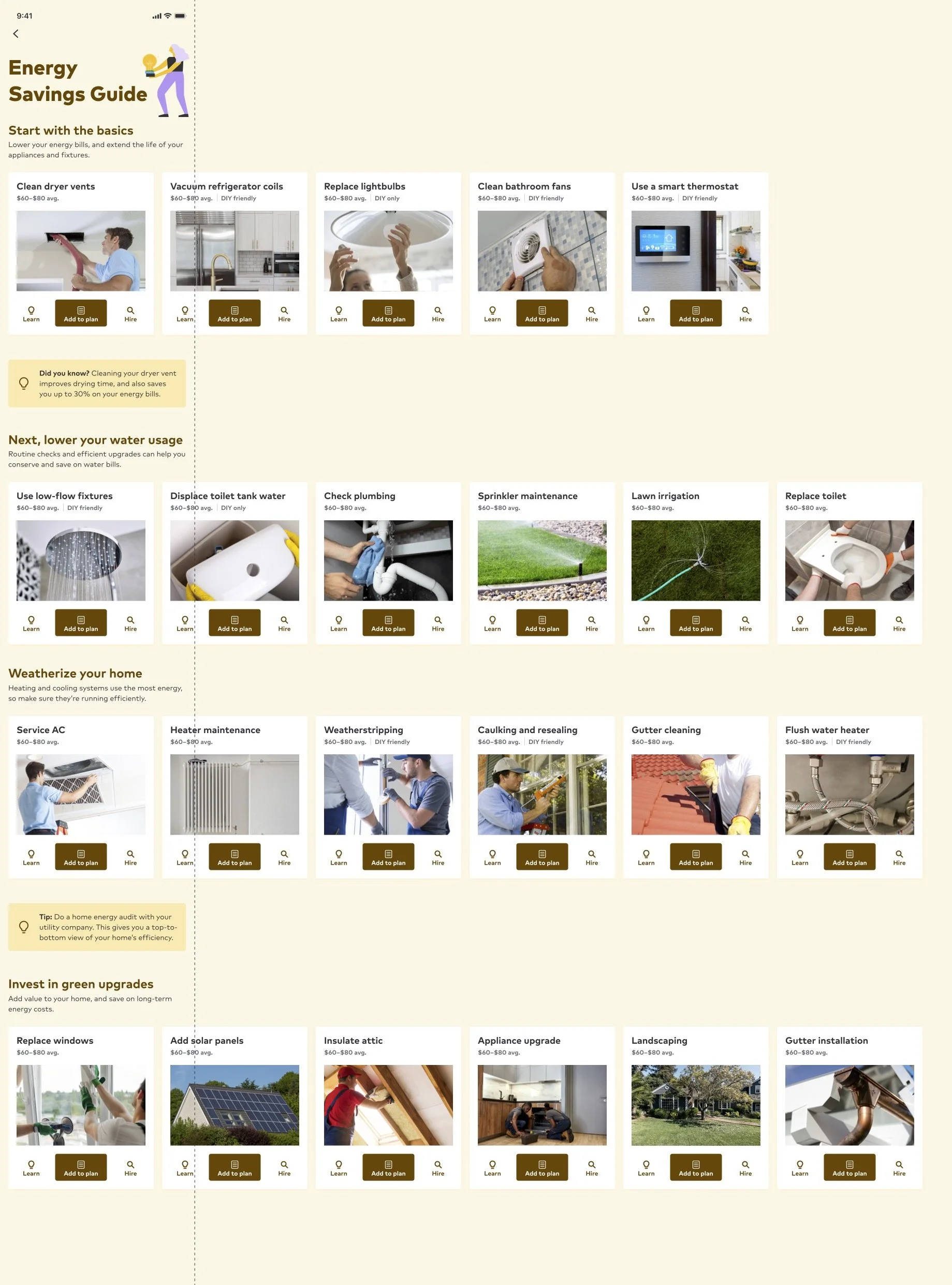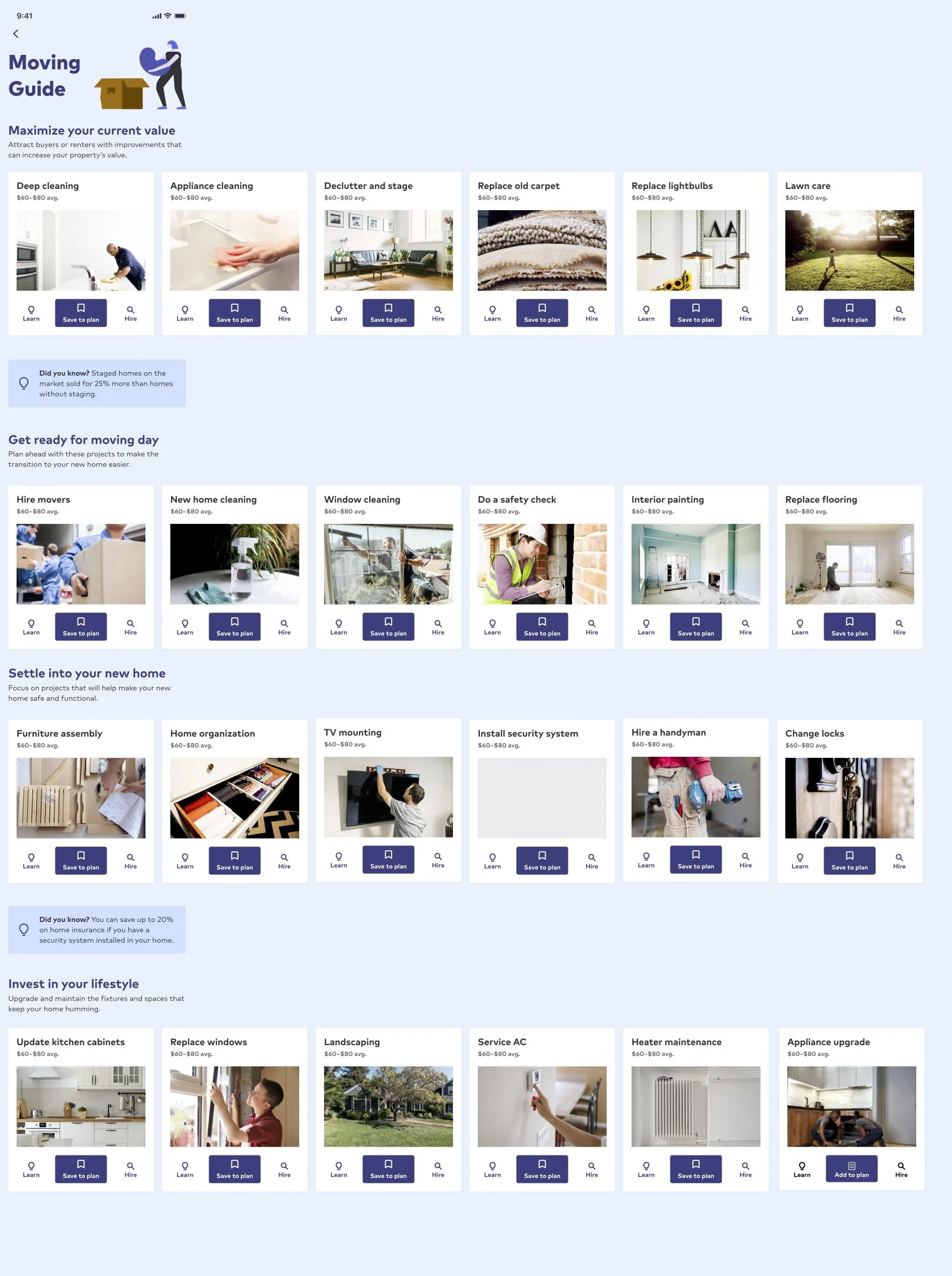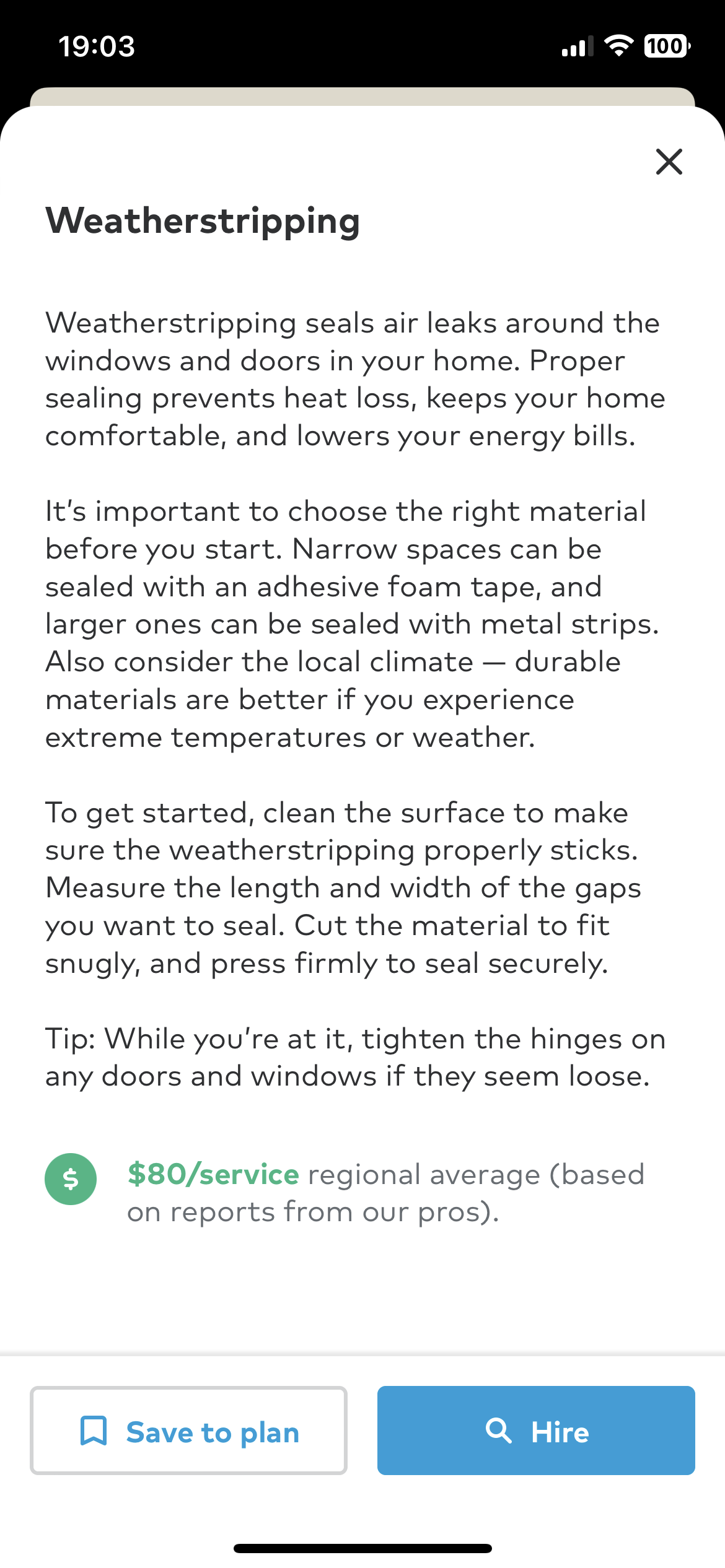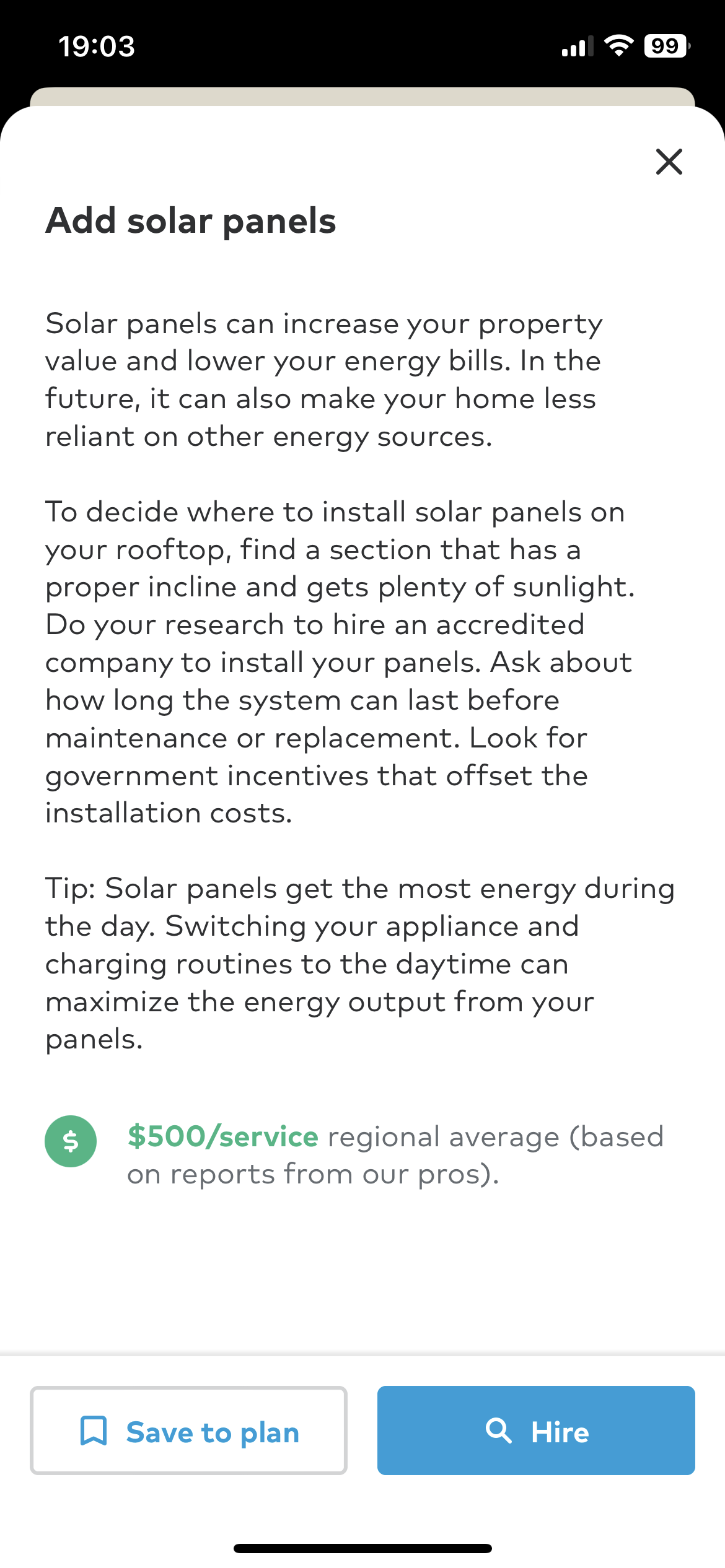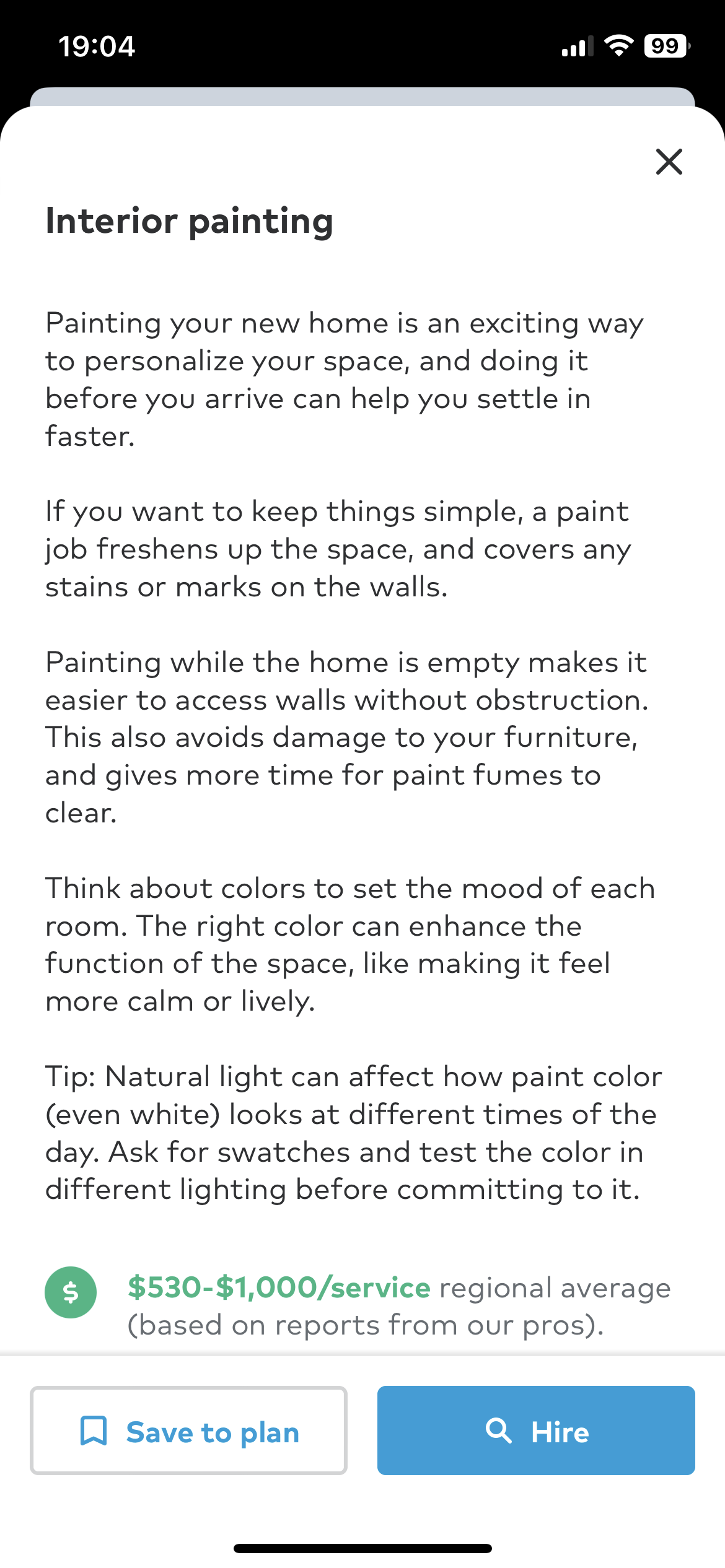Thumbtack — Home Care Guides
Context
At Thumbtack, we updated our latest product vision to be the only app homeowners need to continuously care for their homes. We’re always trying to get to know the user, their home, and their goals better so we can personalise their in-app experience.
User problem
Homeownership is challenging, and homes don’t come with an owner manual. Homeowners often feel there’s a lot they “should” be doing, but they aren’t sure what to do when.
Business need
To become a holistic home management platform, we need to create and deepen long term relationships with customers, and build trust in Thumbtack as home experts.
Solution
We’re building out a series of home care guides that provide homeowners with the education and guidance they need to understand how to take care of their home.
Process
Identify user interests: I worked with our analytics and operations team to identify the most popular types of home projects (called user interests) and popular home projects. This would give us a starting point to test out an initial set of guides and how users interacted with the content.
Build a narrative structure: Once we identified our first set of user interests, I built out a structure that would frame each guide. The main principles for our narrative structure were:
1. Show the relationship between the projects and the overall guide:
Small, digestible, themed groupings.
Make sure the vertical list reads well.
No repetition between sections.
2. Create an intuitive, easy-to-follow progression with recommended projects:
Establish trust with obvious projects.
Progressively more obscure/educational.
Suggest high-dollar projects at the end.
Audit existing “Learn” content: We had project descriptions in our existing database, but we had to ensure they matched our new user interest themes. During this stage, I narrowed down the projects that were still relevant for these guides, and identified the gaps in our “Learn” inventory.
Research DIY project steps: Some projects could be done by homeowners themselves, so I also had to research the proper steps and boil down the process into bite-sized paragraphs. This would help homeowners decide if they wanted to do the project themselves or if they’d hire a pro instead.
Write and edit “Learn” content: For the gaps identified in the audit, I wrote and edited the “Learn” descriptions for new projects. In total, I wrote about 120 projects descriptions. The outline of each description was: a brief statement explaining why the project was important; a paragraph explaining either the DIY steps or what to consider when hiring a pro, and finally a tip or nice-to-know.
Rationale
Validate how users engage with popular, relevant content
Tied into a key user goals to save money
Guide principles
Smaller, quick-win projects first
Use factoids to show how much users can save on utility bills
Use evergreen projects where possible, or ones that don’t depend on seasonality
Heating and cooling vs. Winter and summer
Position the concept of savings holistically with longer-term solutions
Energy savings guide
Rationale
Category with low traffic but high engagement
70% of American households have pets
Validate interest in niche categories
Guide principles
Use inclusive language
Most projects are geared towards dogs, but we wanted to ensure as many pet owners as possible could access the guide
Home projects vs non-home projects
Some projects have an indirect home impact, like grooming
Categorizing projects for relevancy and scannability
Not all pet owners have an outdoor space, so we grouped these projects last
Pet proofing guide
Rationale
Validate if life milestones can lead to higher bookings
Use milestones to start building a long-term relationship with Thumbtack
Guide principles
Use inclusive language
Projects should be relevant for both buyers and renters
Show a linear progression
Since moving comes with a deadline, a linear progression could help the guide function as a checklist
Have a category for selling
Both owners and renters have pre-move tasks they have to do to ensure they get the most from their sale or security deposit
Moving guide
“Learn” project descriptions
Half-sheet descriptions would pop up after pressing on the “Learn” button in the guide.

